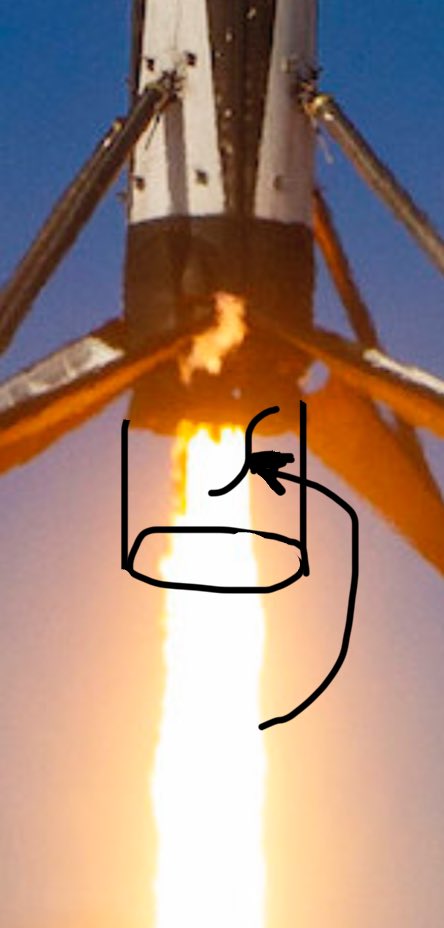
Director, Stephen W. Hawking Center for Microgravity Research & Education @UCF. Prev: co-founder NASA KSC Swamp Works. Space Mining. Space Settlement. Science.
15 subscribers
How to get URL link on X (Twitter) App


https://twitter.com/4biddntruth/status/19337927442640529752/Today, most cultures in the world use base-10, and we use it for every digit in a number. The first digit is ones. The second is 10s. The third is 10x10s. The fourth is 10x10x10s, and so on.




 2/ The first part of this story was likely embellished during the Qing dynasty but it is based in truth. When the Ming dynasty fell in the 1640s, a ruthless general of the peasant rebels, Liu Zongmin, took the concubine Chen Yuanyuan hostage and treated her abusively. Her lover (or husband), Ming general Wu Sangui, was of course humiliated and enraged!
2/ The first part of this story was likely embellished during the Qing dynasty but it is based in truth. When the Ming dynasty fell in the 1640s, a ruthless general of the peasant rebels, Liu Zongmin, took the concubine Chen Yuanyuan hostage and treated her abusively. Her lover (or husband), Ming general Wu Sangui, was of course humiliated and enraged!



 2/ I then asked Grok to derive this relationship the same way it probably did during the LLM training, and it did. So now, if I want to use this key result in my paper, I have to use the many references that Grok used when it derived the relationship, and I have to show the derivation explicitly in the paper, or I can't publish it per the rules of scientific publishing (which of course were created in the days before reliable AI, and we still don't have totally reliable AI, but we can see it is coming fast).
2/ I then asked Grok to derive this relationship the same way it probably did during the LLM training, and it did. So now, if I want to use this key result in my paper, I have to use the many references that Grok used when it derived the relationship, and I have to show the derivation explicitly in the paper, or I can't publish it per the rules of scientific publishing (which of course were created in the days before reliable AI, and we still don't have totally reliable AI, but we can see it is coming fast).

 2/
2/

https://twitter.com/Firefly_Space/status/18969804723049107722/ I don't understand three things about the shadows.


https://twitter.com/johncc2014/status/18875164937027053262/ because “0 feet” altitude above the runway in New Mexico is a lot lower barometric pressure than 0 feet at Cape Canaveral where we took off. The pilots explained how it is set whenever they are at a new airport. I was just wondering and thought no more of it till that night.


https://twitter.com/lucassa54749430/status/18679398682167869602/ We saw evidence of this at the NASA LCROSS mission’s impact into Cabeus crater in 2009. The target soil was so soft that the spacecraft apparently buried into the soil 2-3 meters deep before meeting much resistance. This caused three observable:

https://twitter.com/drphiltill/status/18136788667095288552/ Mr. Bridenstine was appointed by Pres. Trump, and the Trump Transition Team had people assigned to plan space policy. They were calling people for input. I got one such call and the person told me they not only WEREN’T going to cancel Resource Prospector, but instead…
https://twitter.com/nasaaero/status/18045147979347641092. Vortices made visible by water vapor
https://twitter.com/gunsnrosesgirl3/status/1804059338555724218

https://twitter.com/drphiltill/status/18008968043363045171/ You need enough surface area around the base of the rocket for the gas to flow out, or the engines will choke. Imagine a cylinder extended below the rocket to the ground. The exterior of that cylinder must exceed the exit area of all the rocket nozzles that are firing.


https://twitter.com/drchriscombs/status/17999807487720942212/ Here is what they look like on the inside. They are something like 98% empty space, and the rest is a glass fiber. The fibers touch each other along small contacts, so thermal conductivity is very low. (The scale bar is 100 microns, or 0.1 millimeter.)



https://twitter.com/usscaliber/status/17980454583230876362/ Closeup image of the clods. These are likely very porous, low density clods — very fluffy material — that will easily fall apart between your fingers. Yet they are in blocky shapes somehow held together as the footpad impacted and disrupted the ground.

https://twitter.com/mikexgorman/status/17839324529451622772/ First I’ll tell you what I know about the videos, then the telemetry.

https://twitter.com/drphiltill/status/17735511657261592032/ The papers described how those small experiments give physics insight that leads to a new equation predicting erosion rate when there is no saltation. I took that new equation and applied it to the Apollo Lunar Modules to predict how much soil was blowing.





https://twitter.com/spacedotcom/status/17696958512977882802/ Or is it from blowing dust plowing across the surface? Or from engine shutoff when the last sputter of the engine cause a low velocity blanket of dust to fly out to a much smaller distance than normal? The problem has always been that this blast zone is *too small* to be…